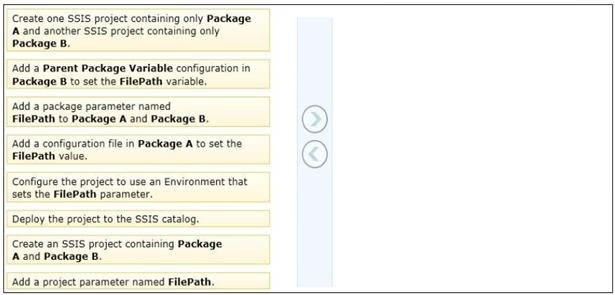DRAG DROP -
You are designing an extract, transform, load (ETL) process with SQL Server Integration Services (SSIS). Two packages, Package A and Package B, will be designed. Package A will execute Package B.
Both packages must reference a file path corresponding to an input folder where files will be located for further processing.
You need to design a solution so that the file path can be easily configured with the least administrative and development effort.
Which four actions should you perform in sequence? (To answer, move the appropriate actions from the list of actions to the answer area and arrange them in the correct order.)
Select and Place:




